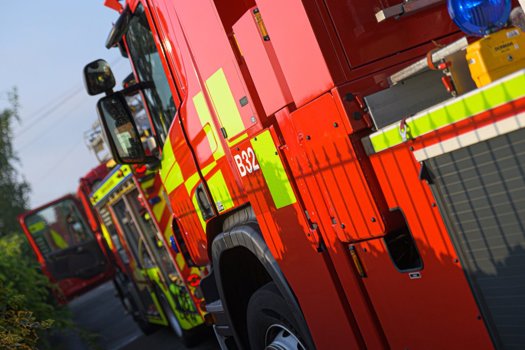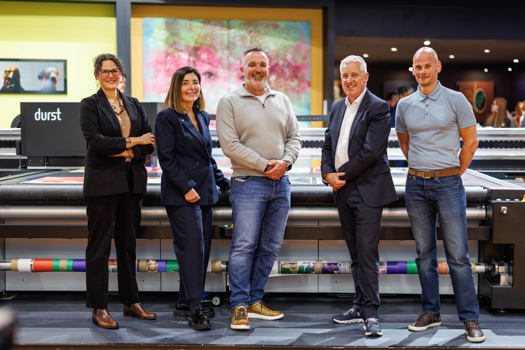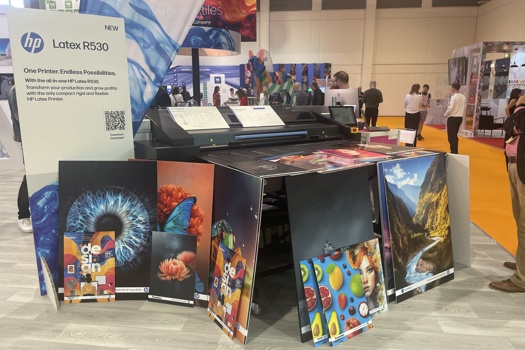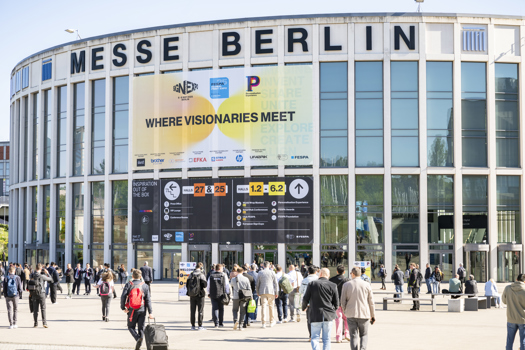When was the machine launched? The Autobond Mini 36 TPM SUV laminator and spot UV varnisher was announced at Ipex 2010. Unfortunately, the machine wasn’t quite ready, so joint managing director John Gilmore decided not to take it to the show. "I’ve seen plenty of machines at shows that haven’t been fully tested, and I didn’t want to make the same mistake," he says. "Spot UV varnishing is a new technology for us, so we wanted to get it right." However, Gilmore says news of the machine caused such a stir that they ended up shuttling people to and from a nearby factory where one was housed.
What market is it aimed at? This particular B3 model is aimed at the digital print market. Gilmore believes there is a massive market for four-colour business cards that are laminated with matt film on both sides and then spot UV varnished inline. In addition, the machine should appeal to digital book printers. He says: "Next time you’re at an airport, look at the top 10 bestsellers. Most of them will have jackets that are matt laminated and spot UV varnished. This machine enables short-run books to have the same finish, when before it wasn’t economical."
What’s its USP? While there are other spot UV varnishers for the digital market, this is the first one that has an inline laminator. It can also be bought as a standalone machine and attached to an existing laminator, provided it has a high pile feeder.
How does the laminator work? The film roll is mounted on a quick-change air shaft, with tension controlled by a pneumatic brake. There are two laminating rollers – one chrome and one made of rubber – both of which are pneumatically adjustable on the nip. The temperature control unit pumps hot water into the chrome roller at a rate of 40 litres per minute and then back to the unit for re-heating. It’s worth noting, however, that Autobond doesn’t supply an air compressor.
And the spot UV varnisher? The spot UV machine is positioned directly behind the laminator and is linked by an Autobond bump sheeter. The conveyor table is split into two sections: the first half of the table has angled side-shift rollers that move the sheets into a side-lay for registration like a folding machine, and the second half of the table has a vacuum belt, which holds the sheets completely flat all over. A detector registers the speed and position of the sheet, and printheads, which are positioned 1mm from the surface of the passing sheets, apply the varnish. Finally, the sheet passes cold-curing LED lamps.
How fast is it and what’s the quality like? Top speed is 30m per minute, but it’s possible to run the laminator on its own at 45m per minute. Makeready on the laminator is about five minutes, while it takes less than a minute to set up the UV machine – this is because an eight-bit 360dpi greyscale bitmap image file of the print job is downloaded to the computer system controlling the inkjet printheads.
What level of support can printers expect? Gilmore says that average training time on the machine is about one week. Remote diagnostics are available and spare parts are not an issue – in fact, Autobond still makes parts for machines that are more than 30 years old. Gilmore dismisses service contracts as a US invention and instead, prefers to guarantee that his five full-time service technicians are on hand 24/7 to respond to any problems.
How much does it cost and how many installations have there been? Priced separately, the laminator is £57,000 while the spot UV will set you back £135,000. The first installation was at Darlington-based Sense Creative at the start of the month and there are currently five more on order globally. B2 and B1 versions of the machine will available later in the year. At Drupa 2012, look out for the machine being demonstrated inline with a Rollem slitter.
USER'S VERDICT
"Everyone talks about adding value, and with spot UV that’s what we do. We’ve only had the machine for three weeks, but it runs like clockwork and it’s enabling us to attract a lot of W2P clients" (5/5)
Tim Thompson Managing director, Sense Creative
SPECIFICATIONS
Speed
30m/min (4,000sph)
Max sheet size 360x570mm
UV lamp
Cold-curing, ozone-free LED
Footprint 2,000x1,100x500mm (SUV only)
Price
Mini 36 TPM: £57,000
SUV varnisher: £135,000
Contact
Autobond 01773 530520
ALTERNATIVES
MGI JETVarnish
French firm MGI claims to have been the first company in the world to offer spot UV coating for digital print, back at Drupa 2008. The French manufacturer says it has learned a lot about the technology over the past three years and has now installed more than 100 of the machines globally. The JETVarnish has a makeready of about five sheets and has the ability to do three different finishes in one pass – satin, gloss and super gloss.
Speed 30m/min
Max sheet size 520x740mm (520x1,050mm opt)
Price £133,000
Contact MGI Technology 0845 388 6448
Scodix 1200
The Scodix 1200 can not only UV spot coat, it can emboss as well. The Israeli company says the machine is ideal for all run lengths and works with both PDF and TIFF files in a variety of formats including B2 and A3. The variable data potential and a zero set-up makes the machine particularly appealing to greeting card, event invitation and corporate menu printers.
Speed 1,200sph
Max sheet size 297x420mm (A3), 500x707mm (B2)
Price £231k–£270k (¤265k–¤310k)
Contact Image2Output 01707 282710 www.scodix.co.uk
Star Product: Autobond Mini 36 TPM SUV

This inline unit is designed to appeal to a host of digital operators








